
| Day walks in the Stirling Ranges |
|
|
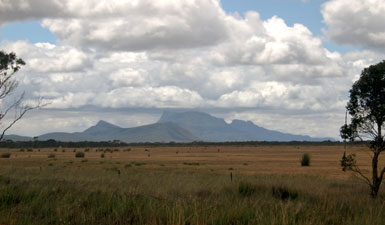 First view of the eastern Stirling Ranges (viewed from the southern approach) |
 Showers over Mt Trio |
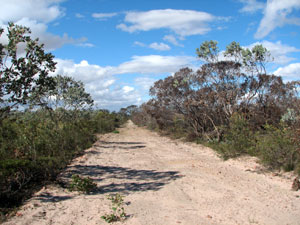 Mallee scrub on the plains fringing the Stirling Ranges |
Heading north from Albany in the drizzle, it was surprising to see how quickly the green of the coastal strip changed to a dry and thirsty landscape. Like south-eastern Australia, the inland part of the south-west corner has suffered badly from drought and both pastures and native grasses had already dried off. Bisecting the ranges via the Chester Pass Road, we reached the Stirling Ranges Retreat, set between wheat fields and flat mallee scrub that provides a northern fringe to these mountains. Soon we were settled in to our comfortable rammed earth cabin listening to the soft patter of the occasional passing shower. |
|
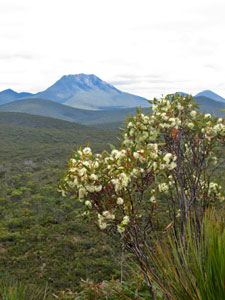 Stirling Ranges landscape (Mondurup Peak) |
|
|||
 |
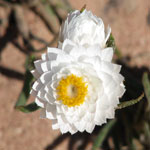 |
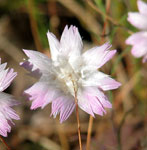 |
 |
|
|
||||
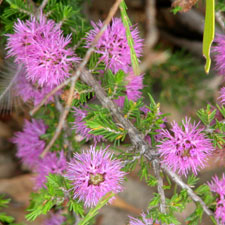 |
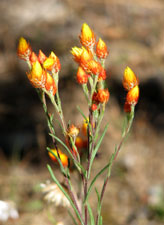 |
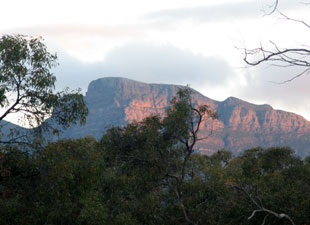 The last rays of the sun on Bluff Knoll |
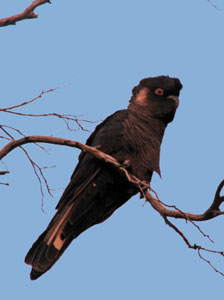 Yellow-tailed black cockatoo |
|
Bluff Knoll (6 km return, 630m climb) At 1073m, Bluff Knoll is the highest point in the Stirling Ranges and, by far, the most popular day walk. To cater for its popularity, a nice sealed road takes you up to a nice sealed carpark with shelters and viewpoints. We headed off early in the morning only to be confronted with the spectacle of low cloud covering most of the mountain - visibility on top would not be very good. To the east, the pyramid of Toolbrunup, the second higest peak in the range stood clear. It seemed a better proposition, but by the time that we had driven there, it too was hidden in the low cloud. We retreated to our cabin, tails between our legs and waited. The one certainty about Stirling Ranges weather is its uncertainty - this is the only place in Western Australia where snow has been recorded. |
It was 2pm when we declared all systems go - there was still some cloud on the very top but it was lifting and, after all, this is only a 3-4 hour walk. Short it may be, but it has been listed as one of the top 25 walks in Australia and, viewed from the car park, the face of Bluff Knoll is indeed an impressive sight. To climb it is not an insignificant feat. |
|
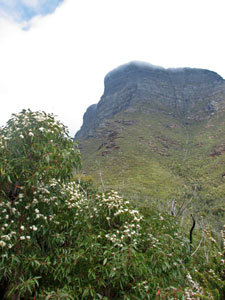 Looking up at the face of Bluff Knoll |
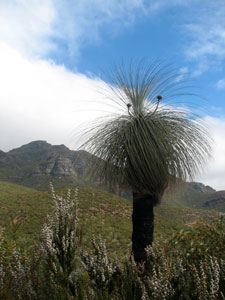 Silhouette of a Kingia grass-tree |
|
 A local skink |
 |
 |
 |
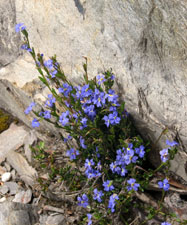 |
|
||||
|
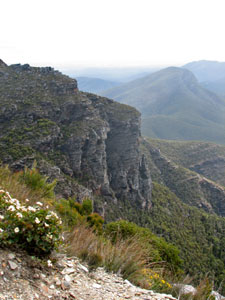 North facing crags of the western Stirlings |
||
 |
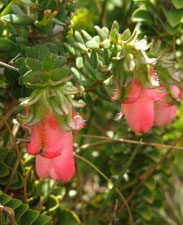 Some of the endemic mountain bells |
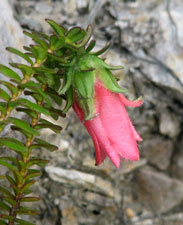 |
|
 |
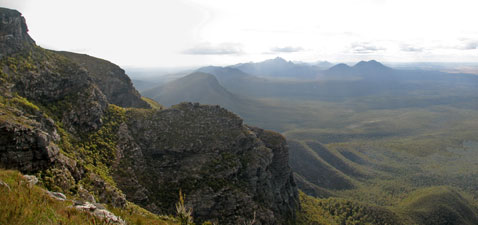 Panorama of Toolbrunup and other peaks of the western Stirlings across the face of Coyanerup Peak |
 |
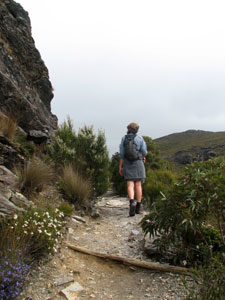 About to crest the saddle between Bluff Knoll and Coyanerup Peak |
|
||
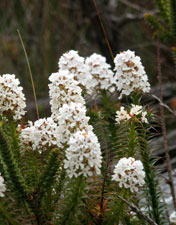 Paper heath |
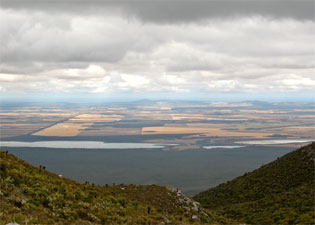 View from the saddle over the lakes to the south and the wheatfields beyond |
 Spiny andersonia |
|
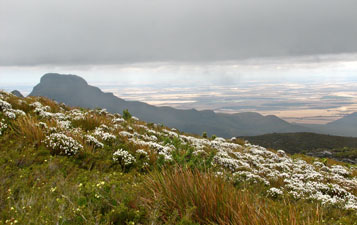 Field of paper heath on the southern slopes of Bluff Knoll, with Ellen Peak in the background |
We turned eastward briefly and then northerly to begin a steady climb up through the scattered dwarf grass-trees of the sloping southern ramp of Bluff Knoll. As we gained height, we entered the domain of stunted shrubs and mountain herbs. These upper south-facing slopes are as close to an alpine meadow as you would get in this part of the world, dotted with white and yellow wildflowers, and scattered with small groves of bonsaied melaleucas in mossy beds.
|
 Cloud being generated on the southern ramps moved rapidly up the slopes of the Bluff |
|
|
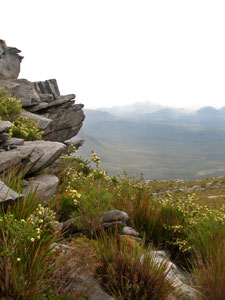 |
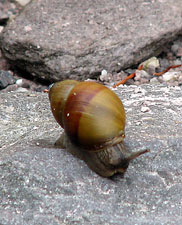 |
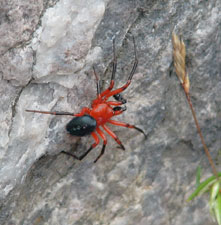 |
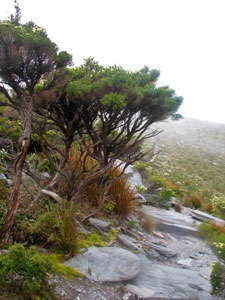 |
The top of Bluff Knoll - a world of stunted shrubs and herb fields, where
|
|||
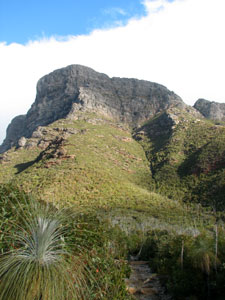 The late afternoon sun illuminates Bluff Knoll |
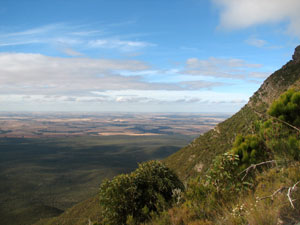 View over the northern plain from halfway down |
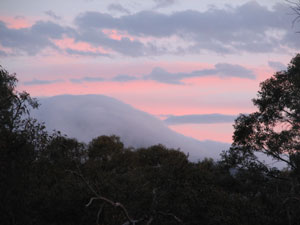 By evening the cloud had returned to envelop the mountain |
|
||
|
Toolbrunup Peak (4 km return, 600m climb) The day of our ascent of Toolbrunup, at 1020m the second highest peak in the ranges, could not have been more different - hardly a cloud in the sky and just a breath of wind - real shorts and tee-shirt weather. Toolbrunup is also a very different mountain to Bluff Knoll, being a true peak that rises steeply to a summit barely 10m x 20m in area. With a route that is also shorter and steeper, this is more a climb than a walk. |
|
||
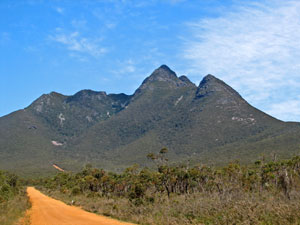 Toolbrunup Peak - impressive for only 1020m high |
 |
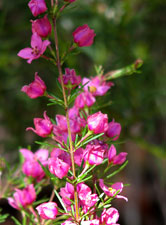 |
|
Smooth at first, the track gradually became rockier as it followed a gully steeply up the southern side of Toolbrunup. Even though we were in the shade of lush gully vegetation, it was still and humid and we quickly worked up a good sweat. |
|
|
|
|
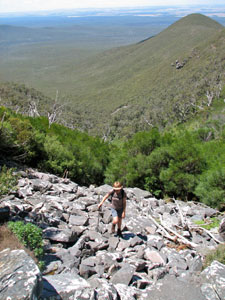 Climbing a boulder shute |
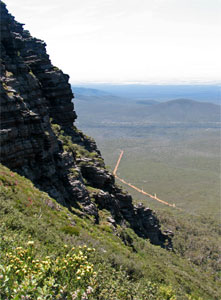 The southern wall of Toolbrunup |
|
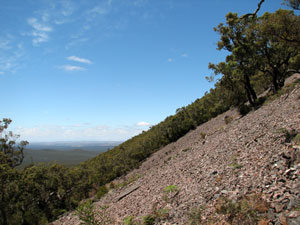 The first of several scree slopes |
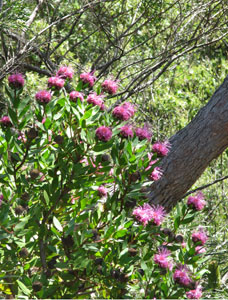 |
||
 Following the steep gully up to the saddle |
A short climb through dense heathy scrub brought us to a second boulder scree shute, which took us quickly up to the wall of the peak. We sidled our way upwards against the rock wall, our destination still a couple of hundred metre directly above us. Eventually the track brought us out to a saddle. For the first times we could see to the north over the dull green forest of the ranges to the vast expanse of salt lake dotted farmland beyond. To the south-west, the Porongorup Ranges were just starting to appear above the razor back ridge extending from the saddle. |
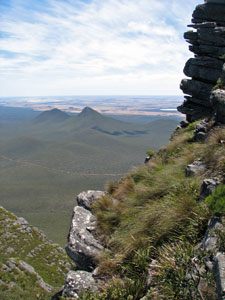 View north from the saddle below Toolbrunup Peak |
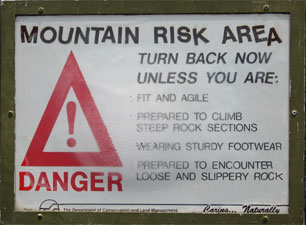 |
|
|
|
|
|||
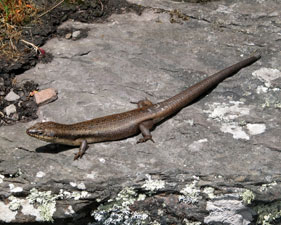 One of many fat skinks |
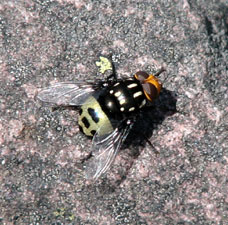 Part of the well-fed skink's diet |
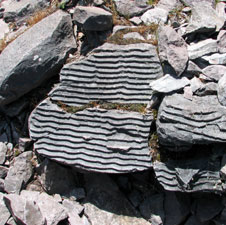 Ripples of the sea on the top of a mountain |
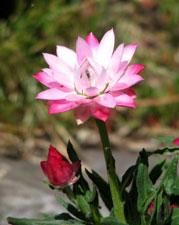 The beautiful pink waitzia daisy |
 Contemplating the world below |
Soon we were joined by another German couple and a Dutch couple - strange, yesterday we were all alone on the vastness of Bluff Knoll, today we are eight on the tiny summit of Toolbrunup. What a pleasant way to spend an hour it was - it was hard to have to get up and finally head back down again. |
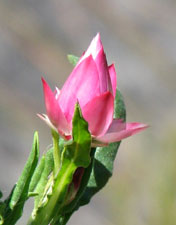 |
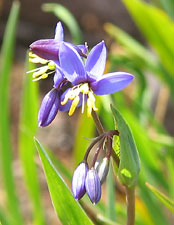 |
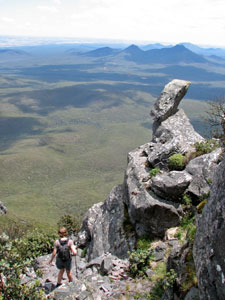 Nello starting the descent from Toolbrunup |
|
 Panorama to the south from the saddle |
|
|
 Panorama of the cloud-enveloped Stirling Ranges from Ellen Peak to Bluff Knoll |
 A slow-moving waterfall of cloud flowing over the ramparts of the eastern Stirlings |
|
|
|